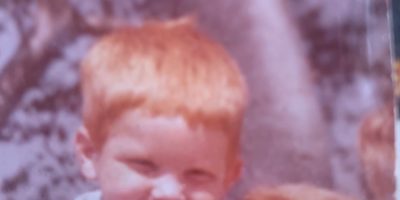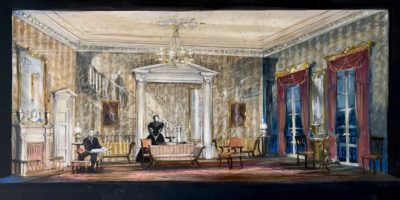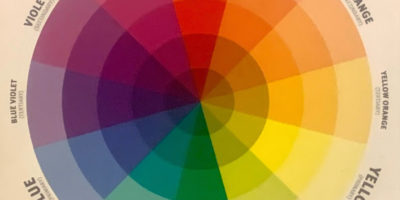Enlarge
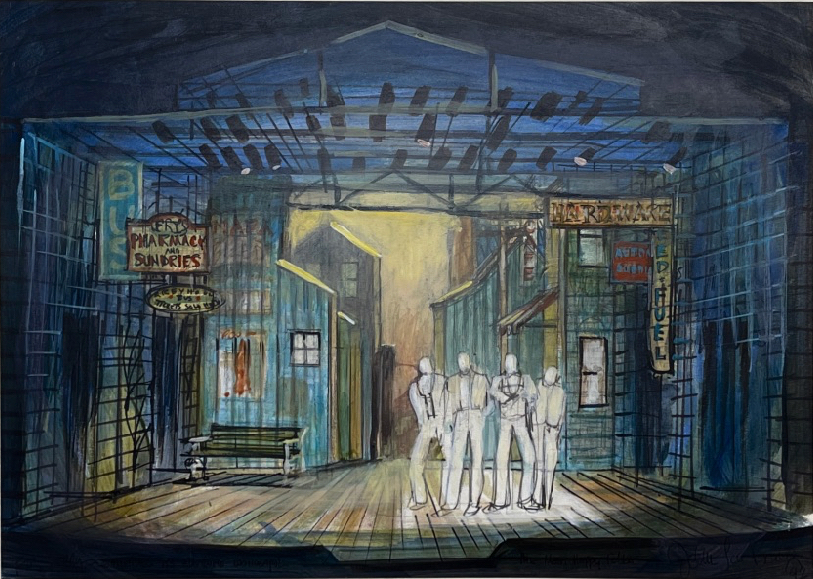
ORIGINAL SKETCH BY JOHN LEE BEATTY
I look at the rendering of this musical revival often. It hung on the wall of Gerry’s apartment in Brooklyn, and after his early death I requested it back, and had it on my wall—completely out of character for me to have my work displayed at home. This sketch means a lot to me, and I am moved when I look at it, for so many reasons.
I call it a musical revival—and it was, literally: It was musical and it was brought back to life. There was an uncanny rightness to Gerry’s choices on this work. This production was also a revival of Gerry and my collaboration, which had taken a ten year breather and then returned to life. We would go on to create some astonishing productions for Lincoln Center Theater, and also some painful failures. The successes far outweighed the failures. Gerry would go for it—and sometimes it would go so very wrong, but when it went right it was without parallel. The revivals of “The Heiress” and “A Delicate Balance” would win him Tonys, but, even more importantly, were truly excellent. This “The Most Happy Fella” was a hint of what was to come.
We did it first at the Goodspeed Opera House, where I had done four seasons of musical revivals in the late seventies, ending with a Gutierrez “Little Johnny Jones” that sadly floundered after an impressive start. That was the end of my bumpy years at Goodspeed, and his debut there and his seemingly final departure.
The phone call from him ten years later was typical Gerry: “John, are you sitting down?” He followed by an offer he presented as ridiculous, U\us reuniting, doing a show at Goodspeed, for little or no money, and a hopeless revival of Loesser’s “The Most Happy Fella.” I say “hopeless” as City Opera had announced it with great fanfare as part of their season with Broadway credentials attached. Any future stymied, we were, as usual with Gerry, to do it only out of love for the theater. Of course, that is how Gerry did everything…as a love letter to the theater.
The limitations of the Goodspeed Stage and production possibilities drove this production, but we put our minds to it. Gerry focused on the characters and plot, rearranging a bit with great clarity, and I followed , drawing the show over and over on napkins on the Metro North New Haven line. I had seen the show in the round years before with two of the original leads. I knew the score from the cast album so I sang it constantly as I drew. Gerry’s great idea was to embrace the limitations, and to discover an approved version for two grand pianos, as opposed to the limitations of the Goodspeed orchestra against the original 33 piece semi-operatic orchestrations of the original. The fact that the show would be done ”acoustically “ in the small wooden floored , horseshoe “Opera House” was also a departure for ears used to the current “Broadway sound.”
Quite amusingly and wickedly, and Gerry was both amusing and wicked most of his waking hours, he withheld his knowledge of classical piano from the music director til a most memorable moment when the music director tried to one-up him on the score. Big mistake. Gerry was a classically trained pianist who had studied with Alicia de Larrocha. He knew a lot about music and pianos. The presence of the grand pianos was expedient but also emotionally grounded for him, these grand piano adaptations approved by Loesser but never previously used.
The scenery had to be well considered and expedient , due to the limitations of the small space at Goodspeed. Thankfully, and usefully, I was well familiar with that stage by then and I knew the tricks of roll drops and compressed space. But the scenery was also emotionally grounded . Joyfully for me, this musical takes place in California , where I come from . Sun-dappled arbors and open vineyards surrounded me as a child, so I was coming home.
Enlarge

ORIGINAL SKETCH BY JOHN LEE BEATTY
Gerry and I reinvented some of the settings, and placed a few differently. The rearrangement came up in a copying lawsuit later, and caused Gerry to forbid the production’s performance tape to be seen any longer at the Lincoln Center performing arts library. We had tried to match the emotional content to the volume and look of the settings, rather than follow exactly the semi-operatic settings of the original. Small was good for so many of the scenes, and the opening up from an intimate setting into larger scene added an emotional exhalation. We celebrated the smaller human dimension.
Due to the ground plan requirements of two face-to-face grand pianos, we were able to invent a “tit” extension forward to bring the illusion of close-up to the characters in their most personal moments. This production was well sung, but character came first. There was a heart-breaking vulnerability, a sadness, and a joy that Gerry was able to elicit . It was a rediscovery of the center of this work.
What happened next was a remarkable confluence of events.
The show was a hit, a big surprise hit. At Goodspeed, not City Opera. There was a great review in the New York Times. The show was moving, but not , forgive me, by the usual bumpy, ultimately cheap Goodspeed method that had burned us in the past.
This modest musical revival without a chance was moving—first to the Center Theater Group in Los Angeles, and then to Broadway . Andre Bishop, who had produced many of Gerry’s early shows at Playwrights Horizons, had become the Artistic Director of Lincoln Center Theater. The small, heartfelt production had quietly been embraced over the one at City Opera, in a reversal of fortune. It turned out to be a reversal of all of our fortunes.
Under Lincoln Center auspices, “The Most Happy Fella” played at the Booth Theater, modesty on full display. Some of the Lincoln Center staff was confused and mocking of the event, but pretty much came around when seeing the show and its effect on the audience.
During technical rehearsals, I went around the corner to visit another show which was “putting in.” For that musical just one piece of art deco scenery cost what our entire set had cost. I was embarrassed and envious. I was sensitive to the fact that I always worked on low budget , albeit tasteful, productions. I returned to our theater and Gerry, and told him of my frustrations. Gerry replied in his acid/twinkly mode : “We are the antidote to that kind of production.” I replied that all this low budget modesty, was hard on the ego : “If we are the antidote, just once I’d like to be the poison, then.” Slight pause, and Gerry sweetly replied: ”Juan Lee, Juan Lee, you will always be poison to me!” Perfect Gerry, our little Spanish-isms included. Note the repetition. We laughed a lot together, and Gerry would coach me on line delivery. He loved a wicked bon mot. He felt they were improved by doubling certain words.
We shared a lot together. He could be impossible and outrageous, but underneath he loved his actors, and his collaborators. On this show, he refused to let the lighting designer, Craig Miller, light a certain actor singing behind a scrim. The totally invisible actor was unaware that Gerry was pissed about something in his performance. He was also unaware that he couldn’t be seen from the house. Craig’s eyes were popping with frustration. Would Gerry ever cave? Gerry, at final , final dress, gave Craig the note to light the actor. Gerry had had his fun. On the other hand, some critical observers wanted Gerry to replace certain cast members, saying we could get better. Gerry refused, saying that replacing even one would make them all, especially the more inexperienced ones, so paranoid that we would lose more than we gained.
Enlarge

ORIGINAL SKETCH BY JOHN LEE BEATTY
One fascinating exercise we shared, I will always remember as it goes to the very heart of design collaboration: In the final scene of the musical, the song “My Heart is so Full of You” dominates and can break your heart. Gerry and I called the winched rolling store units to move at one place in the music, and we and the audience cried. We experimented some more, and found a later moment to move the units and the audience cried. Then we tried another moment and the audience didn’t cry. Fascinating in music theater, that the right moment in a song, that scenery moving creates an emotion so strong. I say “we cried” as something about this work touched those of us working on it so deeply that we got used to talking to each other with tears in our eyes.
Enlarge
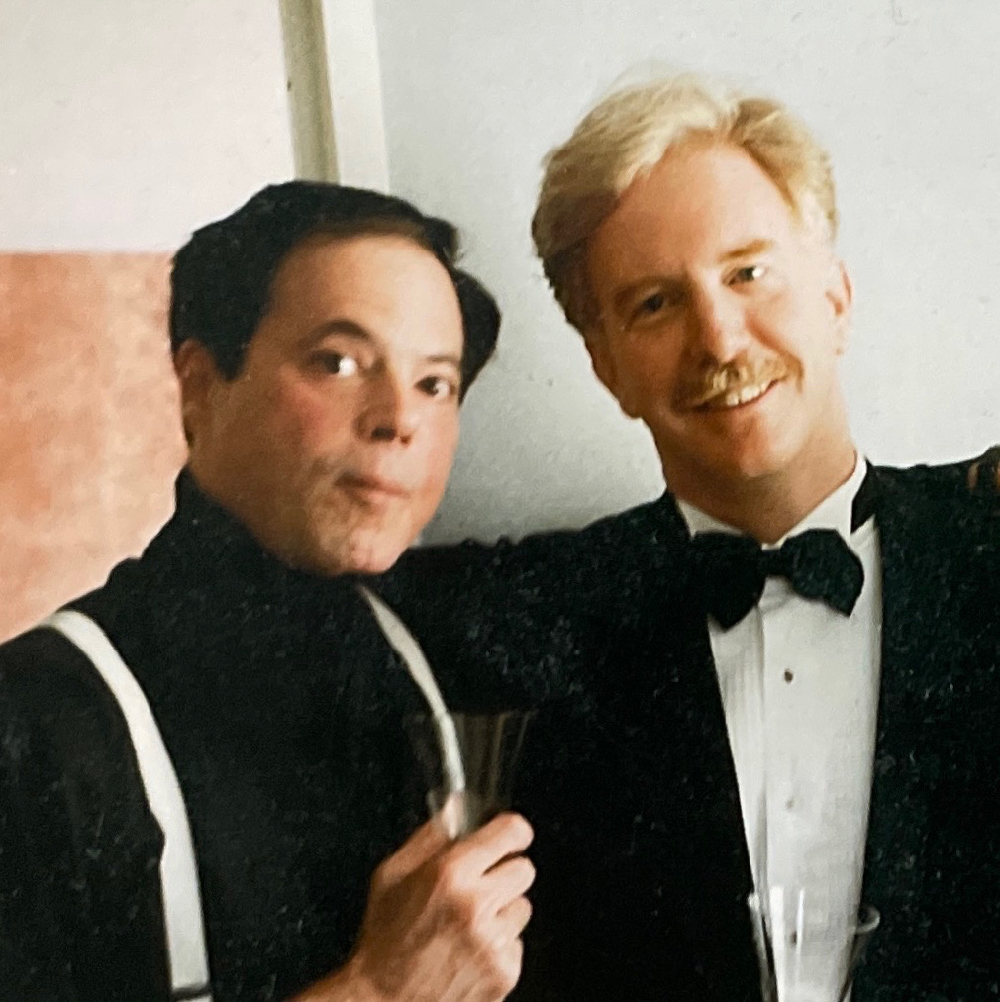
Photo by Bob E. Gasper
